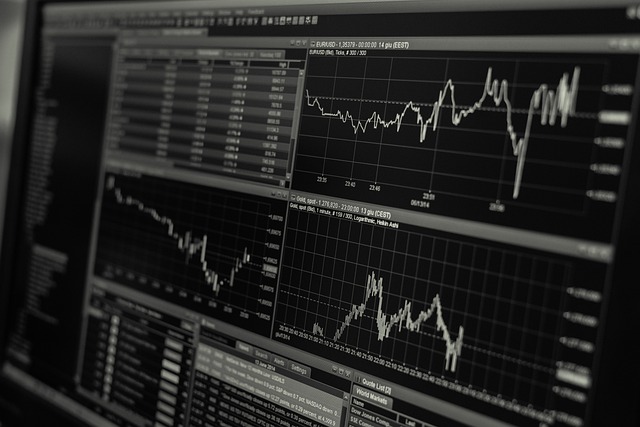Is Binance Futures Trading Profitable in 2025? A Realistic Guide
Author: Jameson Richman Expert
Published On: 2025-10-25
Prepared by Jameson Richman and our team of experts with over a decade of experience in cryptocurrency and digital asset analysis. Learn more about us.
Is Binance futures trading profitable in 2025? This article answers that question with data-driven context, practical examples, and actionable steps. You’ll learn how Binance Futures works, the factors that determine profitability (fees, leverage, strategy, risk management), real-world scenarios and calculations, tools that improve outcomes (signals, bots, backtesting), regulatory and tax considerations, and alternative platforms to weigh. By the end you’ll have a clear framework to evaluate whether futures trading on Binance (or similar platforms) can be profitable for you and how to tilt the odds in your favor.

Table of contents
- How Binance Futures Works (Quick Overview)
- Key Factors That Determine Profitability
- Fees, Funding Rates, and Their Impact
- Proven Futures Strategies
- Risk Management: The Profitability Multiplier
- Tools That Raise Your Win-Rate (Signals, Bots, Backtesting)
- Concrete P&L Examples and Scenarios
- Alternatives to Binance & Exchange Links
- Regulation and Tax Considerations
- Conclusion — Is Binance Futures Trading Profitable?
How Binance Futures Works (Quick Overview)
Binance Futures is a derivatives platform that lets traders speculate on the price movements of cryptocurrencies using leverage, margin, and derivative contracts (perpetuals and quarterlies). In simpler terms, you can control a large notional position with less capital — amplifying both potential gains and losses. For a primer on how futures contracts work in general, see the Wikipedia page on futures contracts.
Key features:
- Perpetual contracts: No expiry date; funding rates periodically settle between longs and shorts.
- Leverage: Adjustable leverage (up to platform limits) that magnifies exposure.
- Cross vs isolated margin: Cross margin shares collateral across positions; isolated limits risk to a single position.
Key Factors That Determine Profitability
Ask any experienced trader and they’ll say profitability doesn’t come from the exchange — it comes from your rules, edge, and discipline. Below are the main variables that determine whether futures trading on Binance is profitable for an individual.
1. Strategy edge
Profitability requires an edge: a reproducible advantage such as a statistical pattern, superior execution, or informational advantage. Strategies with documented edges (backtested) include mean-reversion in low-volatility alt-coins, momentum breakouts on high-liquidity pairs, or delta-neutral hedged approaches.
2. Risk management and position sizing
How much you risk per trade is crucial. Using leverage without rules for stop-loss and position sizing is a fast route to ruin. Simple rules like risking 0.5–2% of capital per trade dramatically increase long-term survival and profitability.
3. Fees and funding rates
Trading fees, taker/maker commissions, and funding payments (for perpetuals) erode returns. High turnover strategies must explicitly account for costs. For a detailed look at how exchange fees change outcomes, see articles analyzing trading fees and how they affect strategy profitability.
4. Execution and slippage
Large positions in illiquid markets suffer slippage. High-frequency or scalping strategies demand tight spreads and fast execution. You should measure realistic slippage in backtests.
5. Psychological factors and discipline
Even edge strategies fail when traders break rules under stress. Consistent journaling, pre-defined rules, and automated exits (when appropriate) help maintain discipline.
6. Market regime
Crypto markets are cyclical. Momentum strategies perform strongly during trending markets; mean-reversion does better in range-bound conditions. A robust plan adapts to regimes or blends multiple strategies.

Fees, Funding Rates, and Their Impact
Trading costs matter more than many novices expect. On futures, the main costs are:
- Trading fees: maker/taker fees per executed order
- Funding fees: periodic payments between longs and shorts for perpetual contracts
- Overnight financing or borrowing (for cross-collateral): platform-dependent
Fees compound with frequency. A scalper turning over capital dozens of times per day needs extremely low fees and slippage to be profitable. You can learn how specific fee structures affect returns in updated fee analyses — for example, see a recent deep dive into trading fees and the effect on P&L (Futu trading fee explained 2025).
Tip: Always model fee drag in your backtests (even a 0.05% round-trip cost per trade can change a winning system into a losing one over thousands of trades).
Proven Futures Strategies That Can Be Profitable
No single approach guarantees profits. Below are strategies with track records when executed with discipline, risk controls, and proper cost management.
1. Trend-following / momentum
Concept: Ride big moves using breakouts or moving-average-based entries. Leverage amplifies returns on trending moves but increases drawdowns during reversals.
- Pros: Big upside in trending markets
- Cons: Frequent stop-outs; requires good trade management
2. Mean-reversion and range trading
Concept: Buy dips and sell rips around perceived value levels, often in less volatile altcoin pairs or stablecoin-pegged pairs.
- Pros: Higher win rate; smaller drawdowns in stable markets
- Cons: Can get crushed in trending markets
3. Scalping
Concept: Small profits repeatedly captured from spread and micro-movements. Scalpers need ultra-low fees and fast execution.
4. Hedged and delta-neutral strategies
Concept: Use futures and spot positions or options to isolate alpha while hedging directional risk. These approaches can deliver steady returns but require additional complexity and capital.
5. Arbitrage
Concept: Take advantage of price discrepancies across exchanges or between spot and futures (basis trading). Lower-risk but opportunity-dependent, and often requires automation and fast transfers.
Risk Management: The Profitability Multiplier
Risk management is the single most important determinant of long-term profitability. Below are essential techniques:
Position sizing
Use fixed fractional sizing (e.g., risk 1% of capital per trade) so a string of losses doesn’t wipe your account. Leverage should be a tool, not a toy.
Stop-loss and take-profit rules
Always define exit levels in advance. Consider volatility-based stops (ATR multiple) rather than arbitrary price points.
Maximum drawdown limits
Set a personal or system-level drawdown cap (e.g., 20%). If exceeded, pause trading, analyze, and recalibrate.
Diversification
Spread exposure across strategies and uncorrelated pairs when possible. Avoid concentrating too much capital in a single leveraged position.

Tools That Raise Your Win-Rate (Signals, Bots, Backtesting)
Modern traders leverage tools to reduce emotional mistakes and scale execution. Below are categories and practical recommendations.
Signal providers and research
High-quality signal providers can be helpful when used as an input to your own analysis, not as a blind trading system. For a data-driven review that compares signal providers and shows which services deliver value for traders, see this in-depth review of crypto trading signal providers.
Important: Validate any provider on track records, transparency, and refund/guarantee policies before subscribing.
Trading bots and automation
Automation enforces rules and removes human error. Popular uses include grid bots, market-making bots, and strategy automations. If you’re evaluating bots, read updated guides that cover security, strategies, and cost-benefit analysis — see this ultimate guide to the best crypto bot trading apps for 2024 and beyond.
Community resources (like curated Reddit threads) can surface popular bot implementations and real user experiences — for a curated list of profitable trading bot communities, see this Reddit communities guide (Most profitable trading bot Reddit communities in 2025).
Backtesting and forward testing
Backtest on realistic data including fees and slippage. Then forward-test on a demo account or with small real positions for several market cycles to avoid curve-fitting.
Examples of tools and resources
- Backtesting platforms (e.g., TradingView, custom Python/Pandas frameworks)
- Bot vendors and open-source projects — compare security and audit history carefully. For details on bot prices, alternatives, and value propositions, see this discussion on a popular trading bot and its alternatives.
Concrete P&L Examples and Scenario Modeling
To decide whether Binance futures trading can be profitable, you need to model scenarios. Below are simplified examples showing how leverage, win rate, and fees interact. These do not guarantee outcomes but illustrate mechanics.
Example 1 — Trend trade (conservative)
- Account size: $10,000
- Strategy: Trend-follow, average gain per winning trade = 5% (before fees), average loss per losing trade = 2%
- Win rate: 45% (typical of trend systems)
- Average leverage used: 3x
- Round-trip fees and funding effect: 0.2% per trade
Expected return per trade (approx): 0.45*(5%*3 - 0.2%) + 0.55*(-2%*3 - 0.2%) = 0.45*(15% - 0.2%) + 0.55*(-6% - 0.2%) = 0.45*14.8% + 0.55*(-6.2%) = 6.66% - 3.41% = 3.25% per trade. With careful risk sizing (risk 1% equity per trade), this approach can compound profitably when scaled and disciplined.
Example 2 — Scalping (aggressive frequency)
- Account size: $10,000
- Avg profit per successful scalp (pre-fees): 0.3%
- Avg loss per failed scalp: 0.35%
- Win rate: 60%
- Leverage: 10x
- Fees + slippage: 0.15% round trip
Adjusted per-trade result: 0.6*(0.3%*10 - 0.15%) + 0.4*(-0.35%*10 - 0.15%) = 0.6*(3% - 0.15%) + 0.4*(-3.5% - 0.15%) = 0.6*2.85% + 0.4*(-3.65%) = 1.71% - 1.46% = 0.25% per scalp. At high frequency, 0.25% per trade can be meaningful, but this assumes very low slippage and a reliable execution pipeline — which many retail traders lack.
Key takeaway: leverage magnifies BOTH gains and losses. Small edges can be profitable if fees are low, execution is reliable, and psychology is controlled.
Alternatives to Binance & Exchange Links
If you decide Binance Futures is not right for you, there are alternative derivatives platforms. Each offers different fee schedules, leverage limits, and liquidity. When choosing an exchange, consider regulatory environment, liquidity on pairs you trade, fee discounts, and security history.
- MEXC: A derivatives-friendly platform with competitive fees and promos — register here: MEXC registration.
- Bitget: Focuses on copy-trading and futures — register here: Bitget referral.
- Bybit: Popular for derivatives liquidity and professional features — register here: Bybit referral.
- Binance (if you prefer): High liquidity and wide product range — start here: Binance registration.
When comparing exchanges, also read fee and service analyses that explain how subtle differences in fee models and funding mechanisms affect long-term P&L — this futu trading fee analysis is an example of fee-focused research.

Regulatory and Tax Considerations
Regulatory and tax regimes impact net profitability. In many jurisdictions, cryptocurrency derivatives are regulated, and tax authorities expect traders to report gains and losses. Consider:
- Tax treatment of futures trading gains in your country (income vs. capital gains).
- Reporting obligations and record-keeping — keep trade logs, fees paid, and funding history.
- Regulatory risk: platforms may restrict access in some regions. Stay informed with official guidance (for example, see national securities regulator pages or the U.S. Commodity Futures Trading Commission website for derivatives regulation context).
Resources, Communities, and Further Reading
Learning from communities and vetted resources accelerates progress. Use critical thinking when consuming community tips.
- Backtesting guides and open-source strategy repositories (GitHub, academic papers).
- Signal service reviews — compare transparency and track records: see this data-driven review of the best crypto trading signal providers.
- Bot and automation guides — for an actionable review of bots, security considerations, and how to pick a bot, read this ultimate 2024 guide to the best crypto bot trading apps.
- Community lists of trading bot discussions and real user feedback — see this rundown of profitable trading bot Reddit communities for 2025.
- Vendor and bot comparisons including pricing and alternatives — e.g., an analysis that covers a specific bot’s price and alternatives.
Practical Checklist to Test If Binance Futures Can Be Profitable for You
- Define your strategy and expected edge. Backtest with realistic fees and slippage.
- Set strict position sizing and stop-loss rules (e.g., risk 1% per trade).
- Start with demo or small live capital; track every trade in a journal.
- Measure metrics: win rate, average win/loss, max drawdown, Sharpe ratio.
- Validate execution speed and slippage; improve if necessary (API trading, better routing).
- Ensure compliance with tax and regulatory rules in your jurisdiction.
- Consider automation or signal integration only after manual strategy verification.

Final Considerations — Realistic Expectations
Some traders achieve consistent profitability on Binance Futures, while many do not. The difference usually comes down to:
- Having a genuine edge and testing it rigorously.
- Discipline in risk management and emotional control.
- Understanding and minimizing costs (fees, funding, slippage).
- Adaptability to market regimes and continuous learning.
Automated tools (bots) and signal services can improve results but should be treated as aids, not black-box guarantees. If you plan to rely on bots or signals, do your homework — reviews and comparative analyses can help you pick reputable providers (for example, see this review of trading signals and a guide to the most profitable bot communities).
Conclusion — Is Binance Futures Trading Profitable?
Is Binance futures trading profitable? Short answer: it can be, but profitability is not automatic — it is earned through a reproducible edge, disciplined risk management, careful consideration of fees and funding, robust execution, and ongoing adaptation. Many retail traders lose money because they underestimate fees, over-leverage, or lack a tested strategy. If you follow a systematic approach — backtest, demo, control risk, and use vetted tools — you can improve your odds substantially.
If you’re evaluating platforms or tools to help reach that edge, consider detailed provider reviews and bot guides before committing capital — here are useful resources: a detailed review of crypto trading signal providers, an ultimate guide to crypto bot trading apps, an analysis of trading fees, bot pricing and alternatives, and a curated list of profitable bot communities (linked throughout this article). For platform choices, you can register on Binance, MEXC, Bitget, or Bybit using the links below to compare interfaces, liquidity, and fees:
- Binance (register): Binance registration link
- MEXC (register): MEXC registration link
- Bitget (register): Bitget referral link
- Bybit (register): Bybit referral link
Further reading and resources referenced in this article:
- Futures contract — Wikipedia
- Leverage — Investopedia
- Who is the best crypto trading signal provider — data-driven review
- The ultimate 2024 guide to the best crypto bot trading apps
- Futu trading fee explained 2025
- Nurp trading bot: price, value and alternatives
- Most profitable trading bot Reddit communities in 2025
If you want, I can:
- Help you model a specific strategy with realistic fees and slippage.
- Review a bot or signal provider and summarize pros/cons based on public data.
- Create a step-by-step test plan (backtesting + forward-testing) tailored to your capital and risk tolerance.
Deciding whether futures trading is profitable for you starts with an honest test. If you’d like to run an example backtest or get a checklist for vetting bots and signal services, tell me your preferred strategy style (scalping, trend, hedged) and account size, and I’ll build a tailored plan.